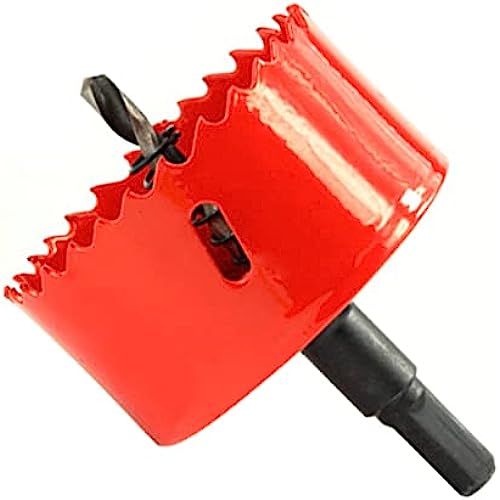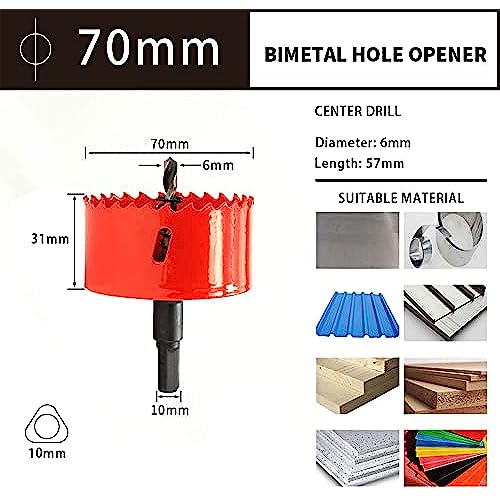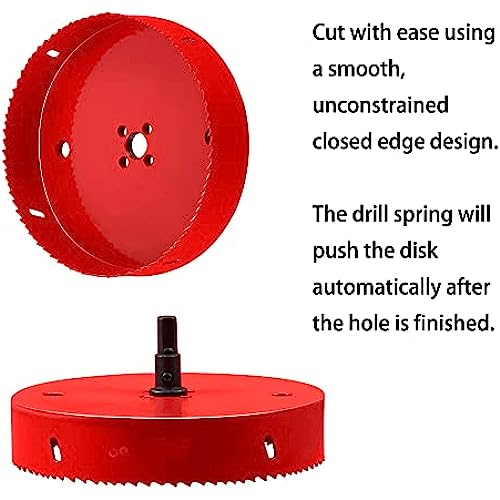











ASTP&FH 2-3/4 Hole Saw with Arbor Mandrel ,HSS Bi-Metal & Heavy Duty Steel Design, for Metal,Stainless Steel,Cornhole Boards,Drywall,Plastic,Brass,Aluminum,Iron and Wood(70 mm)
-

Gio222-57
> 3 daydint work well I return it
-

L. Flewelling
> 3 dayI needed slightly bigger than what I have so bought this cheaper one. Typically I pay the price for Lenox hole saws and saw blades but this was going to be a one time so cheap it had to be. One 2x4 and it was fairly dull already although it will get sharpened before I use it again.
-

gems
> 3 dayPrecision, durable, efficient. Great tool.
-

Justin Rodell
Greater than one weekI loved the easy way the hole saw cut through my roof and ceiling. This was the exact size I needed to install my gas stove pipe through the roof. Fantastic price and worked great!
-

Xavier Cole
> 3 dayThere is another review on here that provides a good evaluation on this hole saw. (Well done, pmoy!) So I am not going to go very deep on this one. I am just going to say that for DIY or non-professional use, this is a good cheaper option to go with. I used it on drywall and had no problems. Satisfied.
-

pmoy
> 3 dayI got the 6” version specifically for cutting holes on ceiling drywall for mounting LED downlights. It did the job, but I didn’t use the arbor that came with the saw. As far as I can tell visually, this hole saw is made by welding an 18-gauge steel saw blade onto a ¼”-thick circular back plate (see attached photo). A thick back plate provides needed rigidity, but ¼” steel is a bit too thick in my opinion; it makes the hole saw noticeably heavy. This hole saw includes an arbor that didn’t work very well. I have other hole saws made by Starrett and Milwaukee. Arbors made by those companies have a threaded center with two protruding tabs, one on each side of center. The tabs are what drive the hole saw. The arbor included with this hole saw doesn’t have tabs (see attached photo). To install, you simply screw the arbor into the saw. As the hole saw is being used, the arbor tightens against the saw continuously. This makes arbor removal extremely difficult when finished. The Starett and Milwaukee arbors don’t have this problem. For cutting drywall, I like to start the hole saw backwards to prevent drywall tearing. Running the saw backward is not possible using the included arbor because the arbor will just unscrew from the hole saw. Fortunately, both the Starrett and Milwaukee arbor can be mounted and used on this hole saw without problems. Although this hole saw doesn’t look like it’s made from the highest quality material or using the best workmanship, I think it’s more than adequate for occasional non-professional use. It certainly does what I got it for. I just don’t use the arbor included with the saw.
-

Vicky Berge I
> 3 dayIt is what it said it was.
-

James Slaga
> 3 dayNothing really wrong but one note of interest. In my application I was cutting 3/4 T&G knotty pine ceiling. the planks were 5 1/4 wide, so this saw was always going to hit a seam. When these teeth hit the seam they would grab, unless you ran the drill at a high RPM. then at a high RPM you could not control the saw once it breaks through. It caused some scratching on the surface of the paneling. After 4 or 5 holes I found techniques as to how to do it best. This may have just been my application of the hole saw.
-

Donald Holand
> 3 dayAwesome quality
-

frank capasso
> 3 dayDid what i needed it to do..









